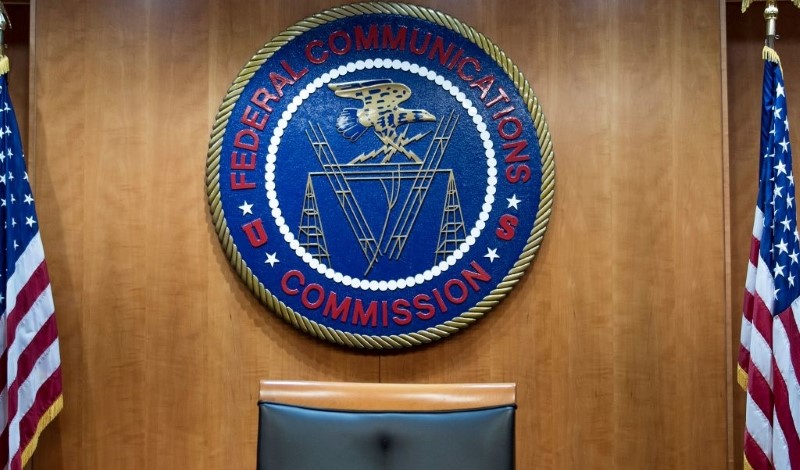
Scholar argues that the FCC deserves more credit for the rise of Wi-Fi.
Wi-Fi is so central to daily life today that it is difficult to imagine a modern world without it. But in a recent article, Professor John Blevins of the Loyola University New Orleans College of Law argues that without action by the Federal Communications Commission (FCC) in the 1980s, Wi-Fi might not exist at all.
The FCC is responsible for allocating the private use of spectrum—the airwaves over which all wireless communications travel. Spectrum is a limited resource because the laws of physics only allow so many wavelengths to be used at the same time. As a result, the FCC allocates different bands of the spectrum by selling licenses.
In 1985, however, the FCC opened some spectrum bands for unlicensed, common use. During this era of deregulation throughout the 1980s, the FCC’s action challenged the property-rights views previously held by many regulators. The agency’s decision also faced overwhelming opposition from the telecommunications industry. In fact, one of the few supporters was the production company behind Star Wars, Lucasfilm, which had been having trouble transmitting C-3PO’s voice.
Blevins contests a common perception that the rise of Wi-Fi was a “happy historical accident.” He argues instead that the FCC deserves substantial credit for its actions from 1985 to the present that carefully nurtured the unlicensed use of the 2.4 and 5 gigahertz (GHz) spectrum bands. It was on these communal bands that Wi-Fi technology first emerged. Indeed, internet routers used today usually feature lights that read “2.4 GHz” and “5 GHz.”
The FCC’s 1985 rule soon led to a renaissance of low-power devices such as garage door openers and remote controls. Blevins attributes this success to simplified technical rules governing the use of the communal spectrum. These simple rules discarded the individualized device-approval process and instead authorized all devices that stay within a low-power limit.
Opponents to the communal approach feared that unlicensed devices would cause interference for licensed devices on the same airwaves. But the FCC proceeded with faith in its power to prevent interference. This approach worked, Blevins argues.
By the late 1990s, after the FCC repeatedly tweaked its technical rules, Wi-Fi emerged, permitting multiple devices to connect to the same internet network in homes and businesses for the first time.
But this advancement came with a catch, notes Blevins. Although the 2.4 GHz band thrived, the 5 GHz band struggled. The 5 GHz spectrum’s technical rules permitted unlicensed use of three separate portions of the band that were not connected to each other, making it difficult for companies to create devices that could use all three bands at once. And even if a company or inventor were to develop such a device, the FCC set different technical rules for each separate portion of the band, which impeded the use of any such technology.
In 2014, the FCC simplified these rules by enabling faster transmissions along the 5 GHz spectrum that could use multiple bands simultaneously. Blevins lauds this innovation, calling it “one of the clearest reflections of the policy design principles that” led to Wi-Fi’s creation in the first place. These principles, Blevins explains, were simplicity, flexibility, and clarity.
Blevins observes that regulatory actions do not always neatly fit into traditional ideological assumptions. And sometimes these actions contradict well-accepted theories of regulation. For example, even though public choice theory generally predicts that policy will benefit powerful private interests rather than the public good, the FCC permitted unlicensed spectrum use despite strong opposition from industry.
Furthermore, the FCC used a “commons” model, which emphasizes communal access to a limited resource, rather than a property-based approach to its Wi-Fi regulation. Property rights often lead to optimal usage, but they can also raise barriers to entry. Blevins argues that the commons-based, light-touch FCC rules achieved the best of both worlds by lowering market barriers for device manufacturers while maximizing productive use of previously unattractive spectrum bands.
Blevins finds that the FCC’s experience regulating the 2.4 and 5 GHz bands has helped the agency tackle other regulatory issues. A recent FCC action, for example, has tried to meet a booming demand for high-speed Wi-Fi, particularly in rural and underserved communities, by opening the 6 GHz band for unlicensed use. The FCC’s 6 GHz rule was based on three lessons learned from its prior experience with 5 GHz: allow unlicensed use, promote unified rather than fragmented bands, and create simple technical rules.
Although industry groups such as AT&T are still concerned about potential interference on unlicensed parts of the spectrum, particularly with public safety technologies using the 6 GHz band, the FCC still refuses to impose stricter technical rules. Rather, its technical rules have limited 6 GHz unlicensed devices to indoor uses within specified power limits.
Blevins warns, however, that the current power limits might be too low and urges the FCC to open the airwaves to more than just indoor devices. The FCC is currently considering whether to eliminate both of these requirements to protect the public safety airwaves from interference.
In sum, Blevins suggests that the FCC deserves more credit for the historic success of Wi-Fi than the agency currently receives. He argues that the FCC acted in the face of strong industry opposition to nurture one of the greatest technological innovations of all time. And, Blevins contends, the agency exercised vigilance over decades to correct problems as they arose. In more ways than one, the rise of Wi-Fi is a case study in successful regulation, Blevins concludes.



